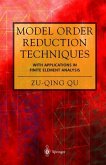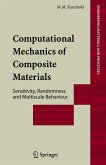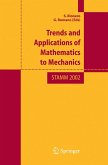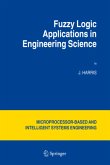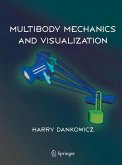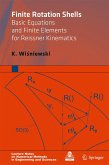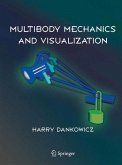Despite the continued rapid advance in computing speed and memory the increase in the complexity of models used by engineers persists in outpacing them. Even where there is access to the latest hardware, simulations are often extremely computationally intensive and time-consuming when full-blown models are under consideration.
The need to reduce the computational cost involved when dealing with high-order/many-degree-of-freedom models can be offset by adroit computation. In this light, model-reduction methods have become a major goal of simulation and modeling research. Model reduction can also ameliorate problems in the correlation of widely used finite-element analyses and test analysis models produced by excessive system complexity.
Model Order Reduction Techniques explains and compares such methods focusing mainly on recent work in dynamic condensation techniques:
- Compares the effectiveness of static, exact, dynamic, SEREP and iterative-dynamic condensation techniques in producing valid reduced-order models;
- Shows how frequency shifting and the number of degrees of freedom affect the desirability and accuracy of using dynamic condensation;
- Answers the challenges involved in dealing with undamped and non-classically damped models;
- Requires little more than first-engineering-degree mathematics and highlights important points with instructive examples.
Academics working in research on structural dynamics, MEMS, vibration, finite elements and other computational methods in mechanical, aerospace and structural engineering will find Model Order Reduction Techniques of great interest while it is also an excellent resource for researchers working on commercial finite-element-related software such as ANSYS and Nastran.
The need to reduce the computational cost involved when dealing with high-order/many-degree-of-freedom models can be offset by adroit computation. In this light, model-reduction methods have become a major goal of simulation and modeling research. Model reduction can also ameliorate problems in the correlation of widely used finite-element analyses and test analysis models produced by excessive system complexity.
Model Order Reduction Techniques explains and compares such methods focusing mainly on recent work in dynamic condensation techniques:
- Compares the effectiveness of static, exact, dynamic, SEREP and iterative-dynamic condensation techniques in producing valid reduced-order models;
- Shows how frequency shifting and the number of degrees of freedom affect the desirability and accuracy of using dynamic condensation;
- Answers the challenges involved in dealing with undamped and non-classically damped models;
- Requires little more than first-engineering-degree mathematics and highlights important points with instructive examples.
Academics working in research on structural dynamics, MEMS, vibration, finite elements and other computational methods in mechanical, aerospace and structural engineering will find Model Order Reduction Techniques of great interest while it is also an excellent resource for researchers working on commercial finite-element-related software such as ANSYS and Nastran.
From the reviews:
"The subject of the book under review is a detailed treatment of various aspects of condensation ... . The book written in engineering style will be of great benefit for those readers who have to treat numerically large structural systems resulting from discretisation of continuous systems. Various examples from structural engineering are presented to support the understanding. The book is competently written, and its reading is highly recommended to everybody interested in condensation." (Hans Troger, Zentralblatt MATH, Vol. 1074, 2005)
"There is great interest in the development of model-reduction techniques, which contain the highest degree of the full model. ... this book is devoted to dynamic condensation methods. ... This book contains many numerical examples to illustrate the techniques described. ... The book is clearly written and contains a wealth of information on this subject. ... useful as a reference tool for researchers, as an educational text for graduate students, and as a guide for engineers wishing to get acquainted with these techniques." (Maurice Petyt, International Journal of Acoustics and Vibration, Vol. 14 (1), 2009)
"The subject of the book under review is a detailed treatment of various aspects of condensation ... . The book written in engineering style will be of great benefit for those readers who have to treat numerically large structural systems resulting from discretisation of continuous systems. Various examples from structural engineering are presented to support the understanding. The book is competently written, and its reading is highly recommended to everybody interested in condensation." (Hans Troger, Zentralblatt MATH, Vol. 1074, 2005)
"There is great interest in the development of model-reduction techniques, which contain the highest degree of the full model. ... this book is devoted to dynamic condensation methods. ... This book contains many numerical examples to illustrate the techniques described. ... The book is clearly written and contains a wealth of information on this subject. ... useful as a reference tool for researchers, as an educational text for graduate students, and as a guide for engineers wishing to get acquainted with these techniques." (Maurice Petyt, International Journal of Acoustics and Vibration, Vol. 14 (1), 2009)



